Stuttgart is an amazing combination of historical heritage and outstanding achievements of our time. Traditional medieval temples, baroque palaces and gothic towers coexist with ultra-modern buildings of trendy art galleries, museums and the headquarters of reputable automobile corporations.
Stuttgart was founded in the 10th century on the site of an old Roman settlement. From the 13th century, under the auspices of the Württemberg dynasty, the city flourished, grew and became richer and more influential with each century. At the beginning of the 20th century, the automobile productions of Mercedes-Benz and Porsche were founded here. The city was badly battered during the Second World War, but his life quickly returned to a peaceful course. Now tourists can fully enjoy its beauty.
What to see and where to go in Stuttgart?
The most interesting and beautiful places for walking. Photos and a short description.
- Old lock
- New palace
- Palace Square
- Schiller Square
- Solitude
- Rosenstein Palace
- Ludwigsburg residence
- Monastery church
- Linden Museum
- Mercedes-Benz Museum
- Porsche Museum
- Pig Museum
- State Gallery Stuttgart
- Art Museum Stuttgart
- Stuttgart City Library
- State Opera Stuttgart
- Königstrasse street
- Killesburg Tower
- Stuttgart TV tower
- Wilhelm
old lock
An ancient building that adorns the city center. Separate fragments of the castle have been preserved since the 10th century. The castle received its modern look in the 16th century after several reconstructions, since that time it began to belong to the family of the Dukes of Württemberg. The last major restoration was undertaken after the end of World War II. Now the castle houses a museum.

new palace
Luxurious residence of the Dukes of Württemberg in the Baroque style. The idea to build his own "Palace of Versailles" came up with Carl Eugene von Württemberg, who hired the best craftsmen to work. The building was erected in 1760, but two years later there was a fire and the duke moved to another place. Only a decade later, work continued. The palace was destroyed in 1944 and rebuilt in 1964.
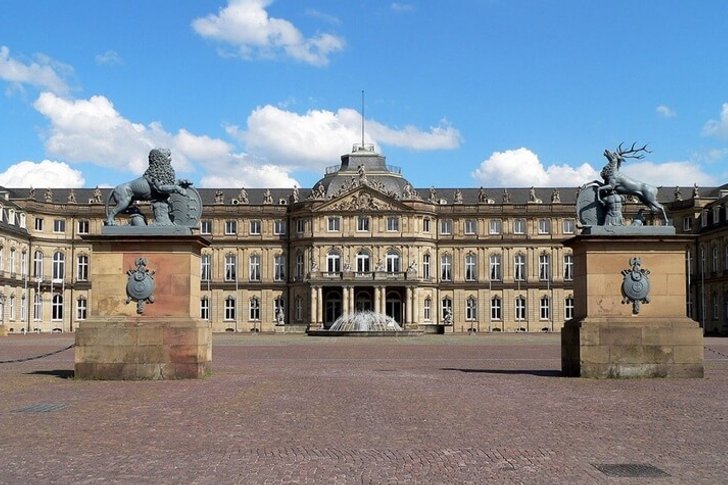
Palace Square
The central square of Stuttgart, elegant and ceremonial "city facade". The main architectural ensemble of the square was formed in the 19th century. The Jubilee Column was installed in the center in honor of the 25th anniversary of the reign of Wilhelm I. In the northern and southern parts there are fountains that symbolize the two main river arteries of Baden-Württemberg. From all sides the square is surrounded by palaces.

Schiller Square
The place is named after the famous poet F. Schiller, who made an invaluable contribution to the development of German poetry. The square is located in the historical center of Stuttgart, it is one of the main city attractions. There are interesting architectural monuments around: the Old Castle, the Collegiate Church, the Old Chancellery, the Prinzenbau.
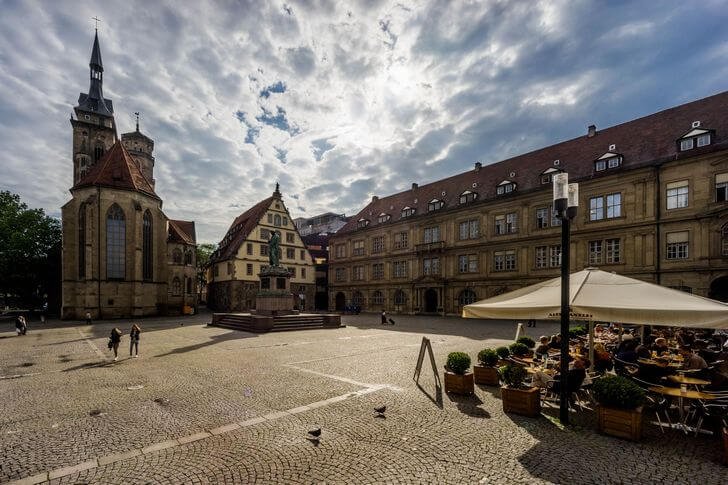
Solitude
Baroque and Rococo castle 11 km. from Stuttgart, another residence of the Württemberg family. The name translates as "loneliness". Solitude was built for Duke Charles Eugene, within its walls the ruler wanted to find solitude and peace. At the end of the 18th century, a military school was organized in the palace, which F. Schiller graduated from. At the end of the 20th century, it was restored and given to the needs of the creative academy.
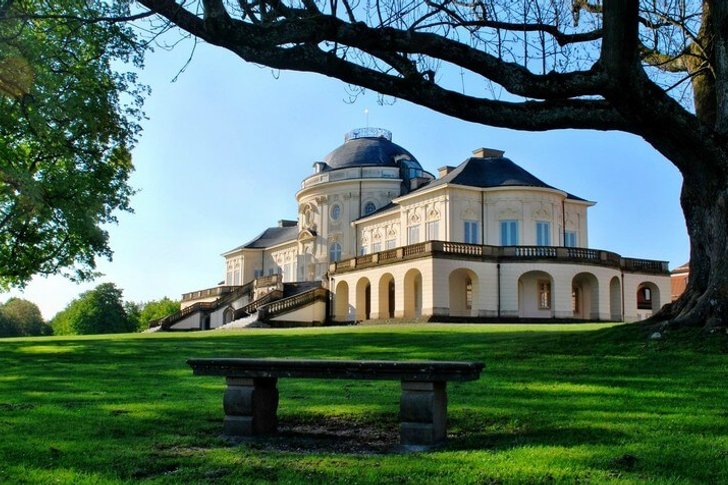
Rosenstein Palace
A 19th-century late classicist palace built during the reign of Wilhelm I (the ruler died here in 1864). The project was developed by the Italian architect D. Saluchi. The palace was used as a summer residence of the ruling family and a venue for organizing holidays and ceremonial receptions. In 1840, a landscape park was laid out around the palace.
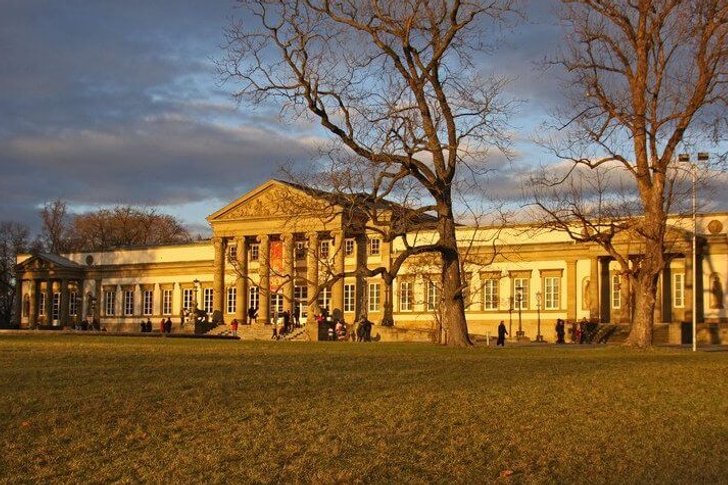
Ludwigsburg residence
The palace complex of the early 18th century, built for Duke Eberhard Ludwig. It was supposed to be a small mansion-residence for the ruler's countryside vacation, but gradually the modest project grew into a luxurious palace. Over time, a whole city and several separate castles arose around it. The architecture of the Ludwigsburg Residence is designed in the Baroque style.

monastery church
Temple of the X-XI centuries, the only surviving monument of the Early Middle Ages. Frescoes of the 13th century have been preserved inside the temple. For several centuries, representatives of the Württemberg dynasty were buried in the church. Initially, the temple was built in the Romanesque style, later restorations were carried out in the German Gothic style. Today, the monastery church is the main Lutheran church in Stuttgart.
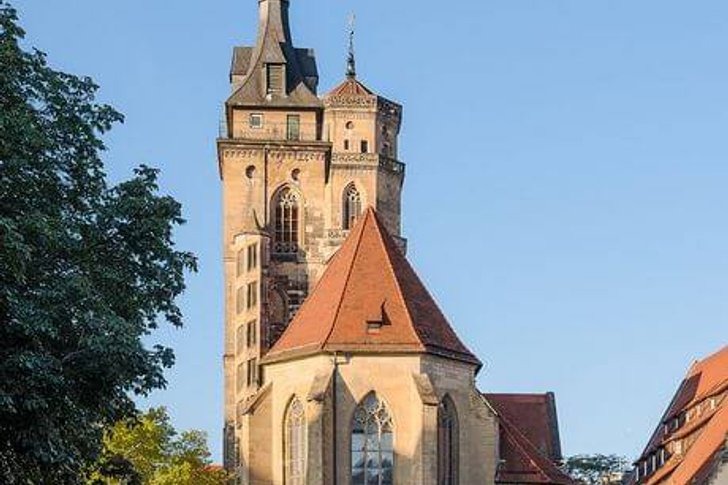
Linden Museum
City ethnographic museum, one of the most significant in Germany and Europe. It arose thanks to the enthusiasm of the head of the trade and geographical society, Count K.G. von Linden. Wilhelm II made a great contribution to the replenishment of museum funds. The programs of the museum are quite diverse. In addition to exhibitions, lectures, scientific seminars, theatrical performances and concerts are held here.
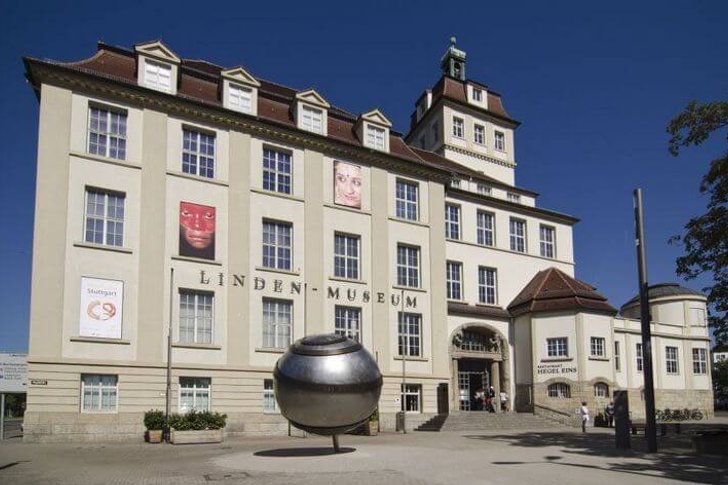
Mercedes-Benz Museum
Daimler AG is headquartered in Stuttgart, which produces the world-famous Mercedes-Benz. In 2006, a museum dedicated to the history of the Mercedes brand was opened. The exposition covers 125 years of the history of this car, the exhibition halls show brands produced in different years and eras. In addition to cars, visitors can see other exhibits related to the history of the plant.
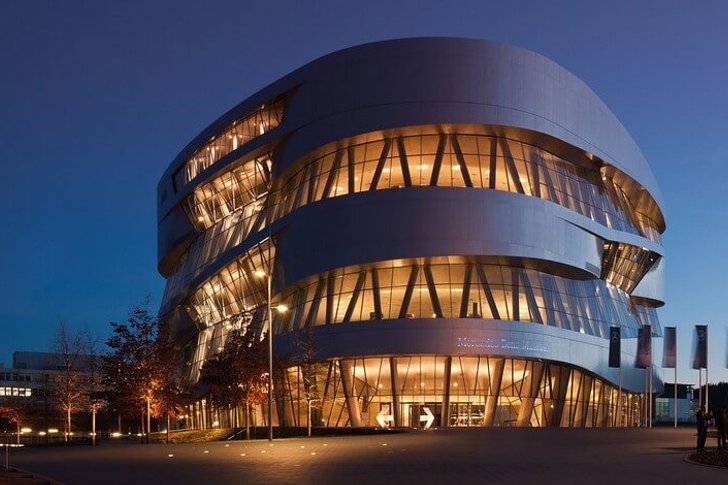
Porsche Museum
A museum dedicated to another famous car brand - Porsche, produced by the Dr. Ing. h.c. F. Porsche AG. The corporate headquarters is located in Stuttgart. The museum began to work in 1976, and in 2009 a new building was erected for it. The collection contains several dozen cars, each worth hundreds of thousands of euros.
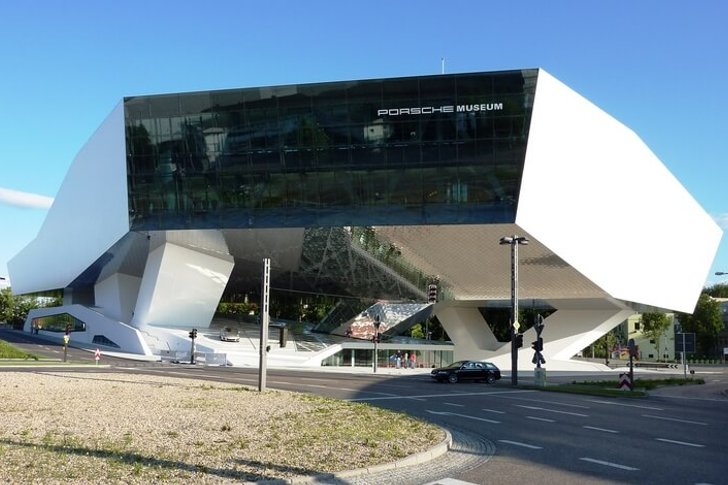
Pig Museum
The Germans consider the pig a symbol of good luck and an animal that brings happiness (maybe that is why the pork knuckle is so popular in Germany?). Stuttgart has a whole museum dedicated to pigs. True, not real individuals live in it, but figures made of various materials. The museum collection contains more than 40 thousand funny artificial pigs.
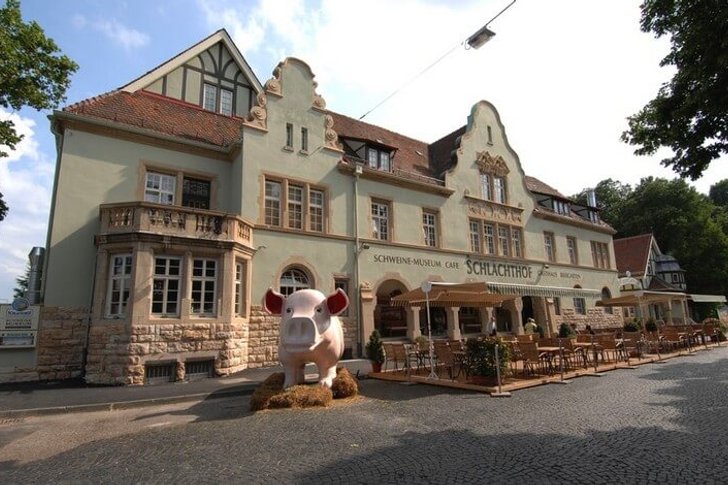
State Gallery Stuttgart
An art gallery opened in the middle of the 19th century under William I. It was destroyed by bombing in 1944 and rebuilt in 1958. A couple of decades later, the city authorities decided to build a new building for the museum. In 1984, a postmodern building appeared, where the collection was moved. Among the masterpieces of the Stuttgart gallery are paintings by Holbein, Renoir, Manet, Rembrandt and Rubens.
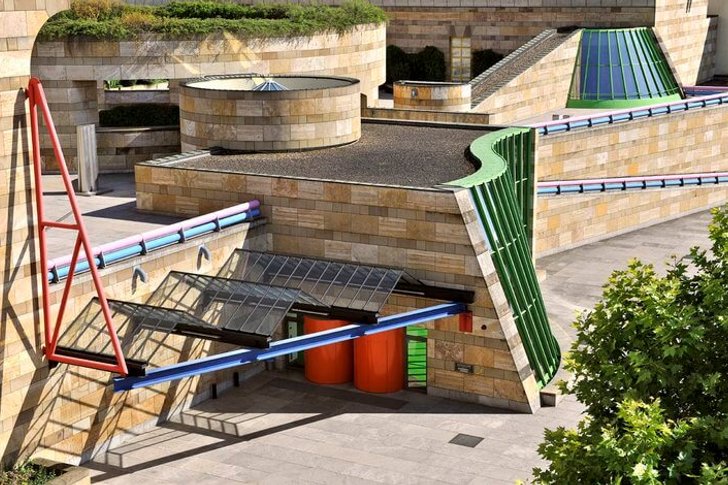
Art Museum Stuttgart
Museum located in a modern building in the shape of a glass cube. The project was developed by an architectural office in Berlin. The museum collection occupies 5,000 m². The gallery owns a private collection of the Italian aristocrat Silvio di Casanova, the works of the famous German painter Otto Dix, and is also replenished with interesting works by contemporary authors.

Stuttgart City Library
An outstanding collection of books housed in an equally outstanding building of modern architecture. The building is a cube with panoramic windows, on each floor there is a thematic hall - a library department. The interior space is organized conveniently and simply: spacious halls, suitable infrastructure for children, places to relax, work on the Internet and even play music.

State Opera Stuttgart
City Opera House, opened at the beginning of the 20th century with the premiere of Ariadne auf Naxos by R. Strauss. The building project was developed by the Munich architect M. Littman. The theater managed to survive during the military bombardments, so its historical appearance has been largely preserved. Stuttgart has always been an important opera center in Germany, many famous German musicians have performed here.

Königstrasse street
The main pedestrian and shopping street of Stuttgart, its length is 1.2 km. The street starts at the station, crosses the Palace Square and leads further to the eastern part of the city. Königstrasse was founded under Frederick I, who wanted to make the appearance of Stuttgart more "capital" and solemn. The street is lined with many historical and modern sights.

Killesburg Tower
The futuristic construction is located in the city park. It was built in 2000 according to the design of J. Schleich. The tower is 40 meters high. It consists of two spiral staircases winding around parallel discs-platforms. These discs are strung on a support axle crowned with a weather vane. A cobweb-shaped iron frame is thrown over the structure.
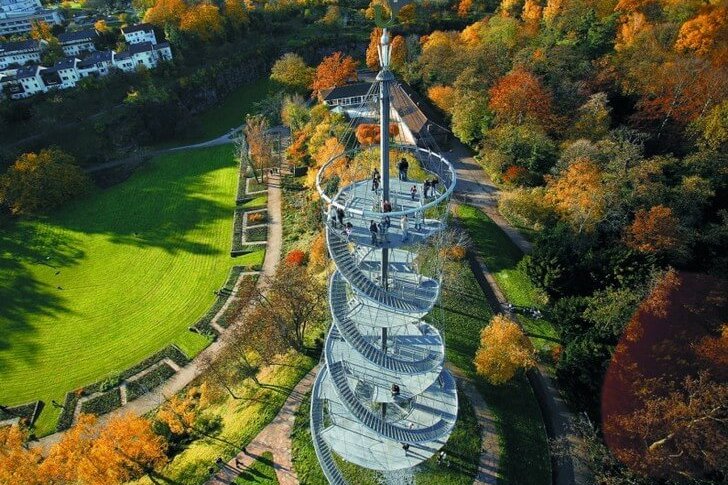
Stuttgart TV tower
The tallest building in the city. The TV tower provides continuous radio and TV broadcasting. She became famous for the fact that she became the very first reinforced concrete television tower in the world. Later, her twin sisters began to appear throughout Europe. The TV tower was erected in 1956, since then it has been working properly and provides a stable signal. There are two viewing platforms for visitors.
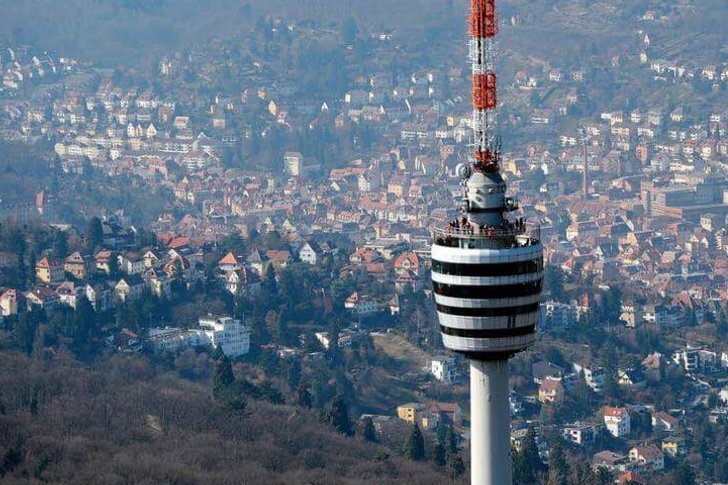
Wilhelm
The palace complex and the park, on the territory of which there is a botanical garden and a zoo. 5.8 thousand species of plants are collected here and about 9 thousand representatives of the fauna live. Graceful landscaping complements the beauty of the landscape. The neo-Romanesque complex was erected under the reign of Wilhelm I. The architect K. L. Wilhelm Zant worked on the project.
